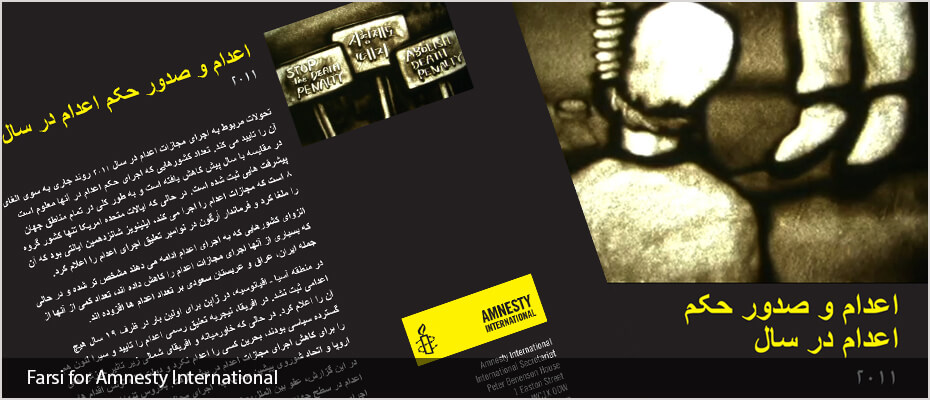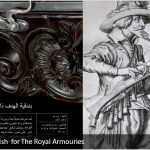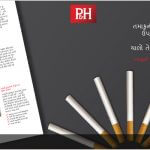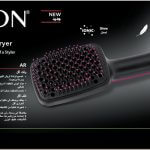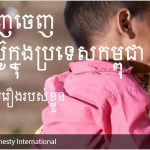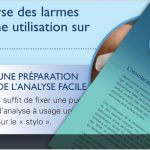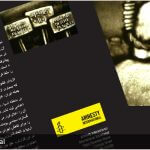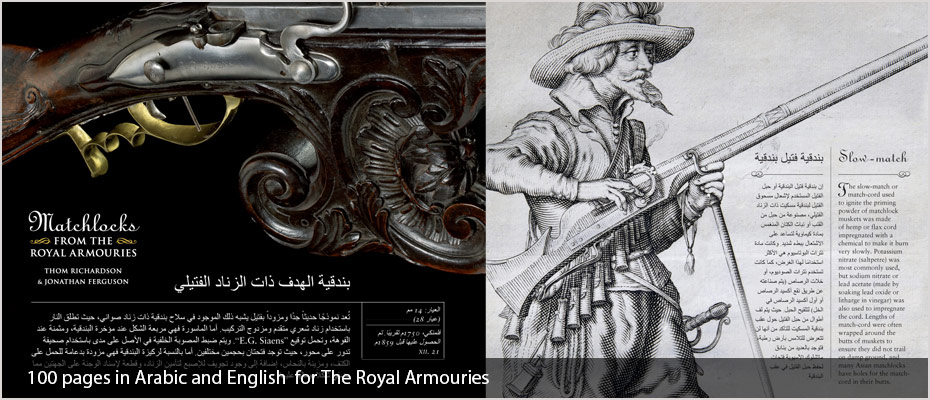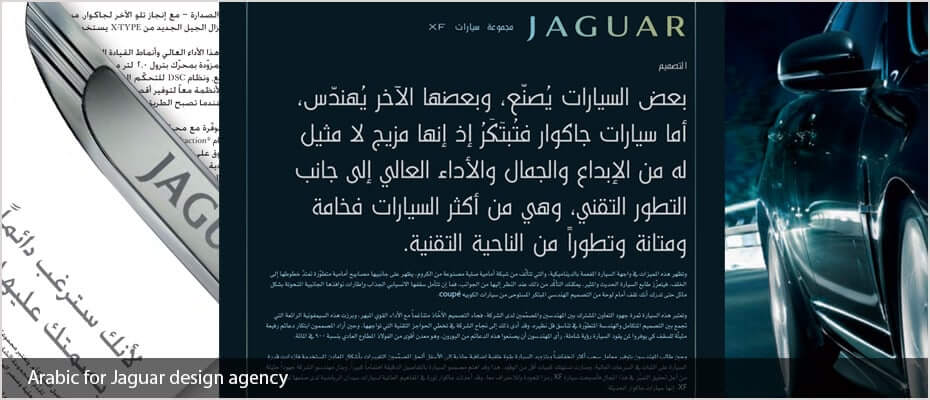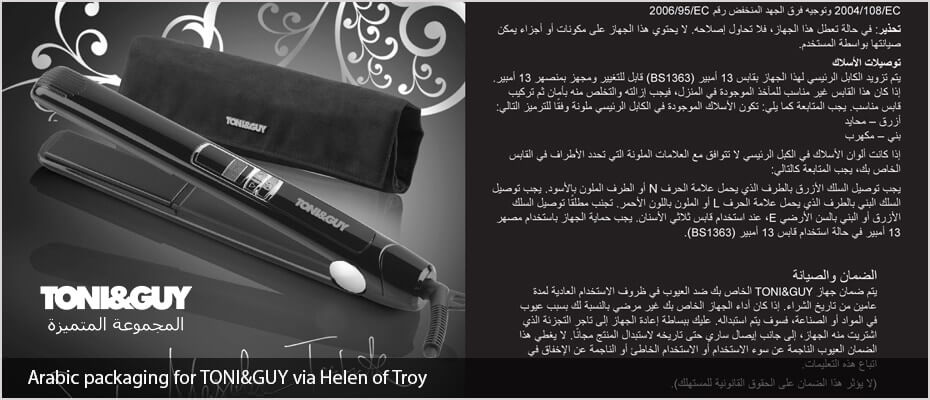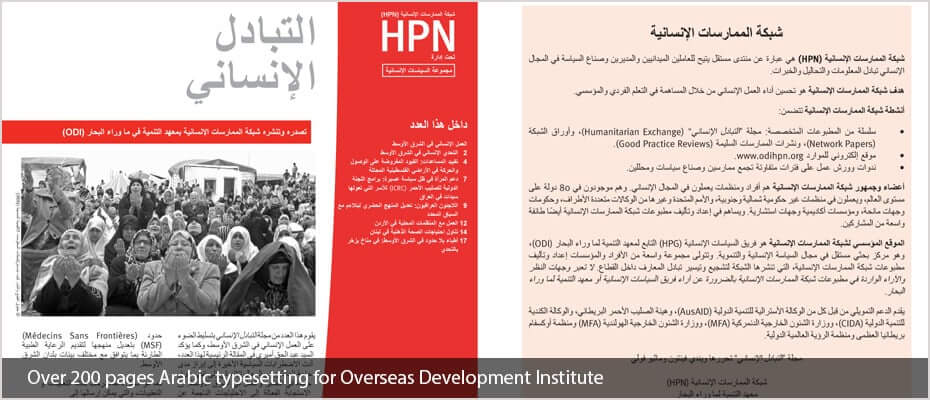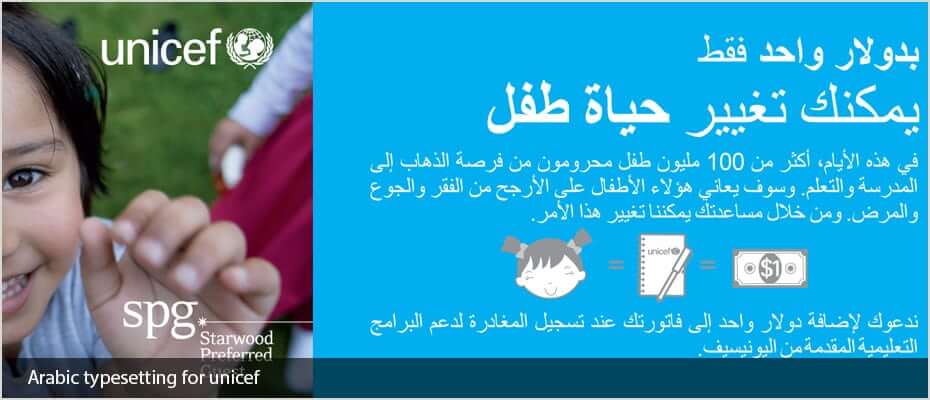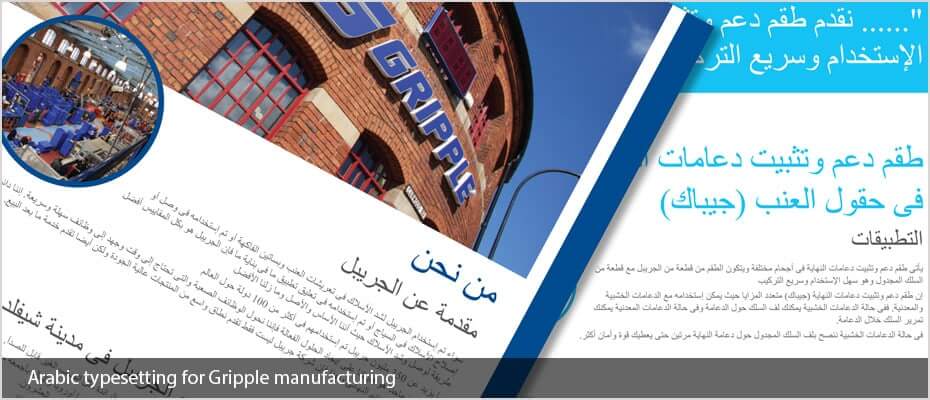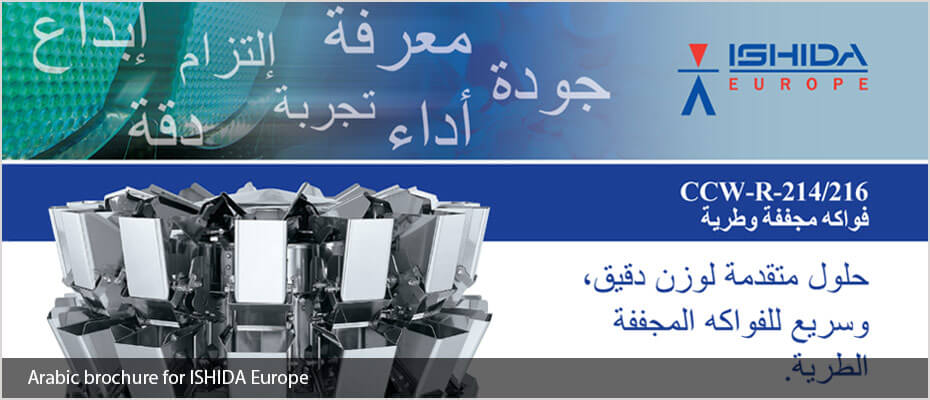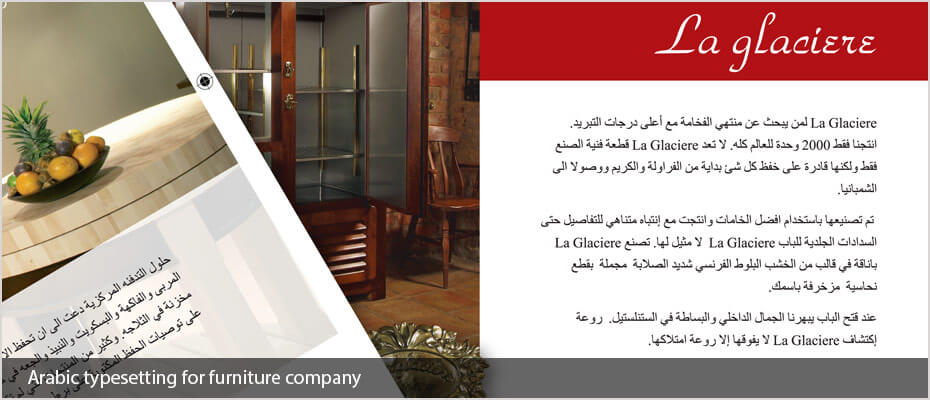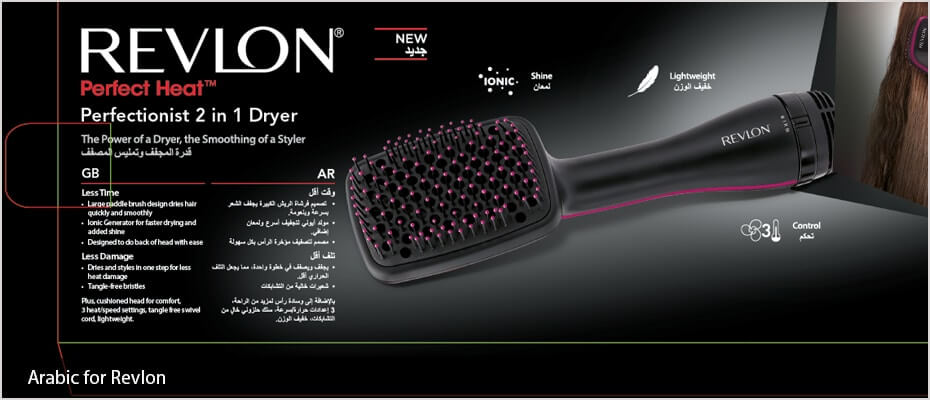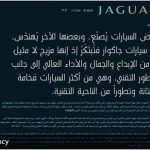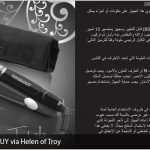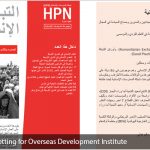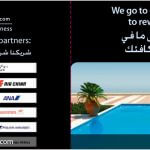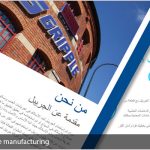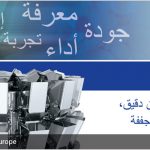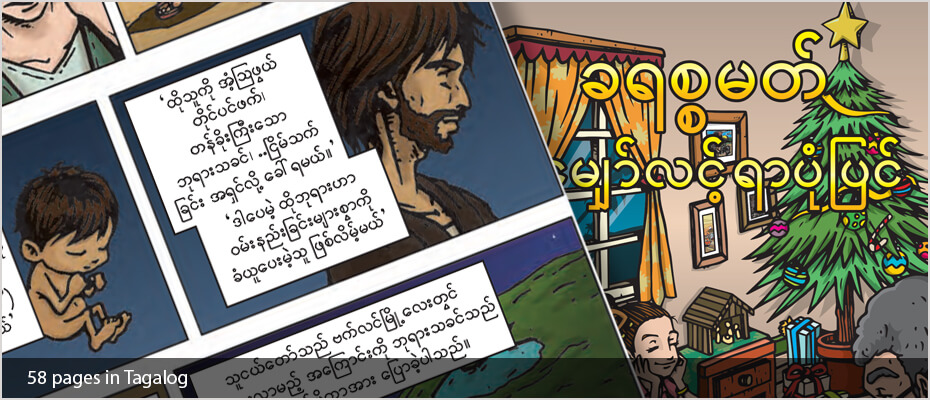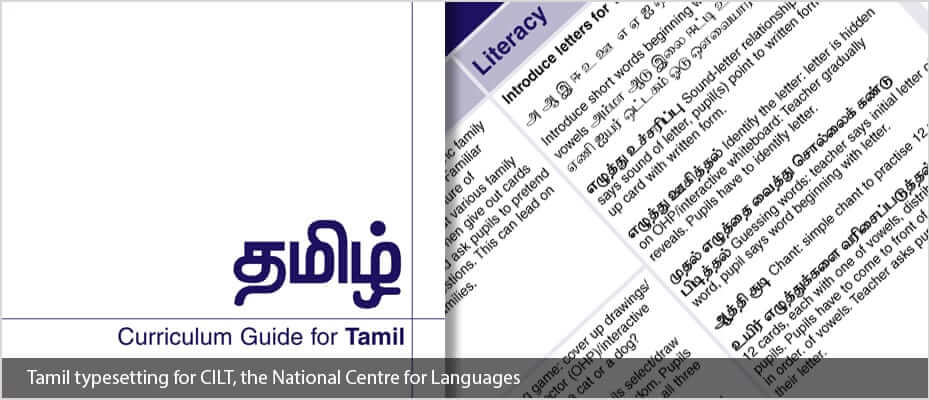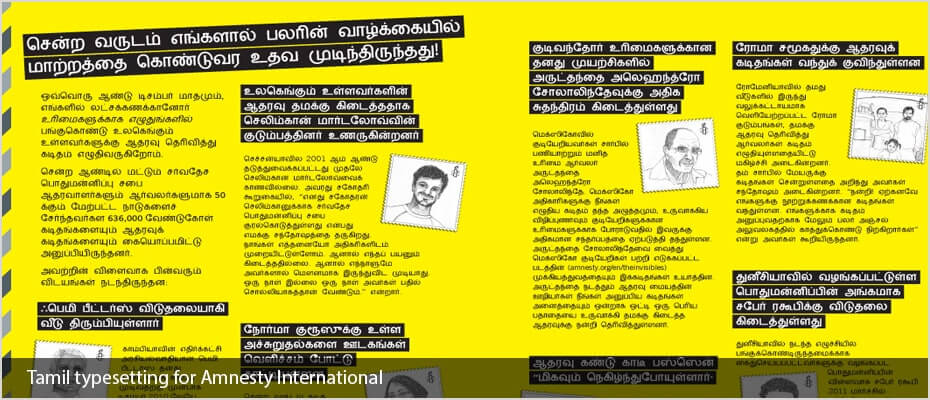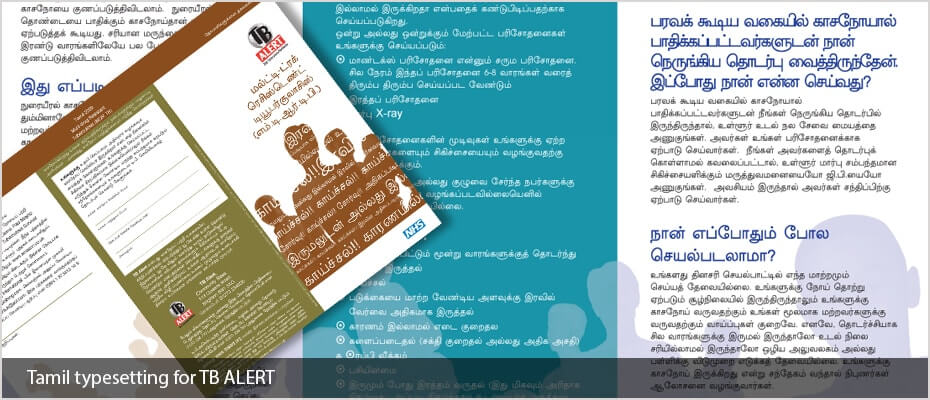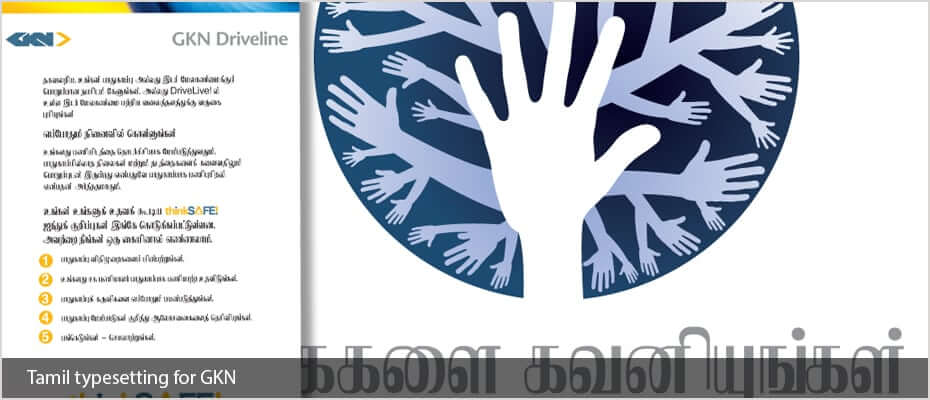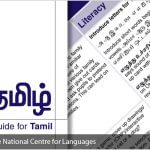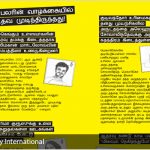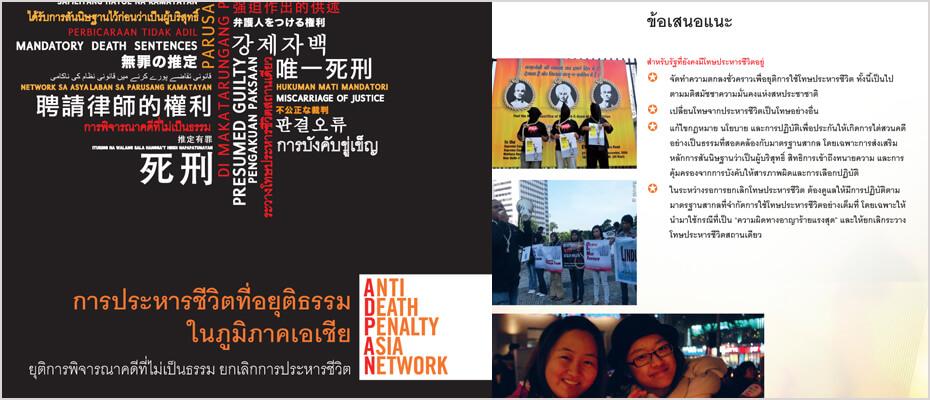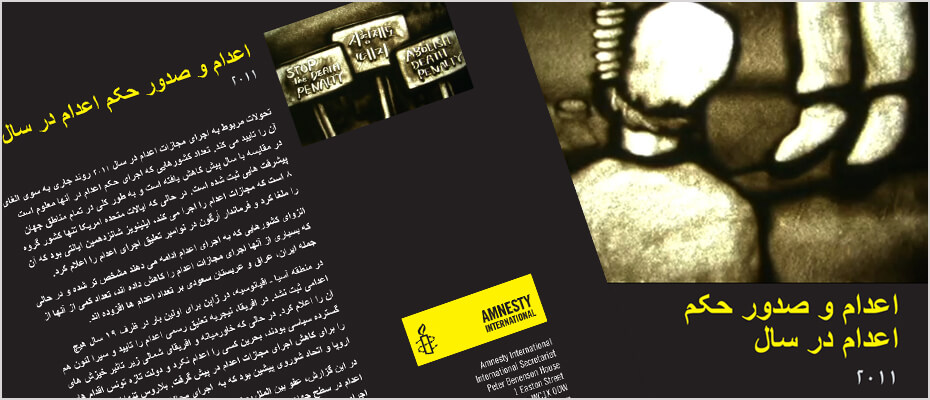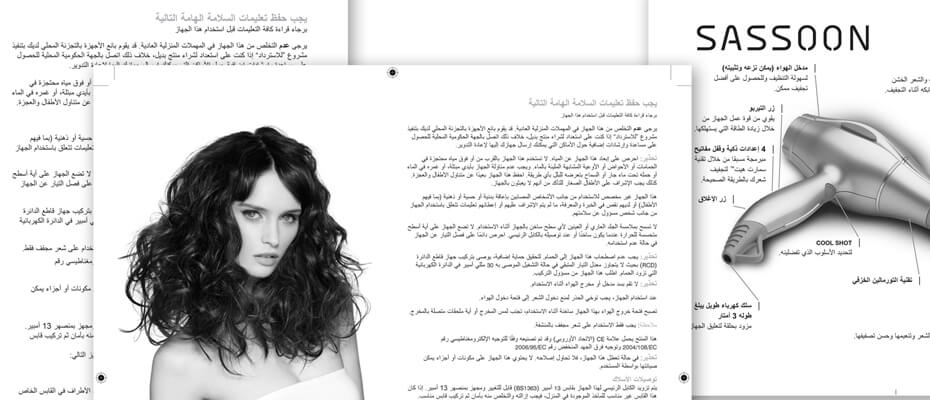- US Office
- 916 414 8714
- us@adelphitranslations.com
A guide to localising InDesign files using translation software
By using an IDML file exported from InDesign we can speed up the translation and typesetting process when using translation memory software. This method keeps all the formatting from the original InDesign file such as links, character and paragraph styles and fonts plus any interactive elements such as cross-references.
This process only works when creating the translation, if the translation process has already been done then in most cases the text will have to be copy pasted into the document which is much more time consuming and can lead to broken links etc.
- First, we export an IDML file from InDesign
- The IDML file will then be imported into our translation software
- After checking the file, we export that as a specialist file
- This file is sent to the translator who opens the file using the same translation software
- The translator will only see the text that needs translating all code and styles is hidden from them
- When translated, the translator and sends the updated file with translated text to Adelphi
- We open that in our translation software and run check to make sure everything is correct
- We then export that file as an IDML format
- The Translated IDML will then be opened in InDesign
- All the formatting from the original InDesign file should still be there, all character and paragraph styles, fonts etc
- We then go through the file page by page and correct any issues
Things that might need adjusting:
If the designer has used the same paragraph or character styles in more than one place and has changed the style manually this can cause problems.
Using Drop caps or italics or UPPERCASE for effect can cause problems as some languages do not use these.
Some languages are much longer than the original English so we might have to adjust font size or line spacing so the translated text fits in the original space.
Using IDML translation does not pick up any text in images or any outlined text, these must be translated and set separately.
If the design requires the translated text to be on the same page as the English i.e., side by side then we will require the text box for translation to be populated with the same English text. The English original text boxes must be on a separate layer so that these can be switched off otherwise the translator will have 2 sets of text appearing on his software.
If you have any questions, please let us know.
Arabic Print Translation
Arabic print translation and what is involved
Do produce a translation for print, it must be organised in such a way as to enable easy implementation into the document. This speeds up the process, cuts costs and reduces the chances of errors in the typesetting process. There are two main ways of organising this.
- Copy and paste: This is not the quickest method but it is still used in many print translation projects, especially smaller one-off jobs. To streamline the process, it is best to create a Word document with a two-column table showing source text on the left-hand side and translation on the right-hand side. The example below is from a French fashion brochure that was translated into English and Chinese for typesetting.
- IDML files: While this is a quicker process, it is not the silver bullet of print translation because it does have its problems. This is what happens when using the IDML process:
- When using InDesign export the document as an IDML file, but before doing so the document must be flipped right-to-left and the text set to right align.
- If styles have been used in the InDesign, then we reset all of the styles to a font that works with Arabic.
- After the IDML file has been exported it will need to be tidied up by an experienced project manager to make sure there are no breaks or errors in the background coding.
- The IDML file is then sent to the translator, who uses special software to open the IDML file which hides all the coding of fonts, paragraph styles and formatting so they cannot be broken in the translation process.
- The translated IDML file is returned to the typesetter who opens it in InDesign.
In theory, all the Arabic text should then be in the correct place, correctly formatted using all the paragraph styles, showing bolding of text and any font colours used. In practice, it still needs quite a bit of work, the font sizes might need adjusting throughout the document, any English left in the document might need realigning and if the company name or product names remain in English then these might need to be reverted to their original fonts.
Below is a screenshot of what an IDML file looks like in the checking process, with all the coloured areas showing the hidden coding that the translator does not see.
Flipping the document from right to left
Arabic typesetting requires flipping the document so it reads right-to-left, also so it can be read with the correct pagination in place. This can be quite time-consuming if the English original has not been designed with this specifically in mind. The World Ready Composer plugin has a “reverse document” option but it isn’t perfect and every page has to be checked for consistency.
What are Arabic numbers?
We often get asked to use Arabic numbers in a document when we typeset, but the term “Arabic numbers” most commonly refers to the numerals we use in Europe and the Americas. e.g. 123456789. In situations like this, what the client is usually referring to is actually “Arabic-Indic” numbers. Please see the examples below.
The Arabic Language
The modern written language (Modern Standard Arabic) is derived from Classical Arabic. Arabic can be spelt without vowels (common spelling) أحب القراءة كثيرا or with vowels أُحِبُّ ٱلْقِرَاءَةَ كَثِيرًا. Modern Standard Arabic is the standardised variety of Arabic used in everyday publications whereas Classic Arabic is used in the Quran as well as in numerous literary texts.
Adelphi is an Arabic Desktop publishing and translation agency that aims to provide a full DTP localisation service to our customers.
Religious translations and typesetting, subtitling and voice-overs
Translations and typesetting of religious materials
We have produced a variety of religious materials from illustrated children’s books to comprehensive Bible study courses We have either provided the translations or been asked to typeset using translations provided by the client, we have also produced voice-overs and subtitles for videos and promotional materials.
The below is a sample from a recently typeset religious book in Greek for an LifeWay an American publishing company.
The publication below was for children and was typeset in Tagalog for OneHope an American publishing company.
Adelphi has typeset documents in over 120 languages and have built up expertise in using InDesign, QuarkXpress, FrameMaker, Illustrator and all Microsoft applications. When typesetting some languages it is important to know which font works for that particular language in a particular design package.
Voice-overs
We have also completed a series of Kurdish voice-overs for the Church of Scientology by Golden Era Productions which is an organization operated by the Church of Scientology that produces promotional material for the Church’s membership.
Adelphi is a multilingual voice over services agency producing foreign language voice-overs in over 80 languages with over 1,200 voice artists.
From Arabic to Yoruba we have the foreign language voice over talent to suit your production and budget. With more voice samples to choose from than other agencies offering a great range of foreign language voice-over artists to meet your expectations. We also have over 120 foreign accent English voice artists to choose from.
Please visit our voice-over pages to choose from over 1,200 voice artists in over 80 languages
Subtitling
Adelphi a specialist foreign language subtitling company committed to offering a competitive and comprehensive subtitling service to suit your requirements and budget. Offering the best one-stop foreign language subtitling package that is unrivalled by any other subtitling agency.
Adelphi’s subtitling services include localisation of motion graphics and animations, Articulate Storyline e-learning projects, and any on-screen text, and all in-house. Our own translation department are specialists in subtitle SRT translation no matter what the language.
Dutch DTP Services
Dutch DTP services
Adelphi has its own in-house DTP studio providing Dutch DTP services including localisation of images, providing a print ready PDF or InDesign files with either outlined or editable text. All our Dutch DTP is handled in-house and carried out by our own experienced typesetters.
Adelphi Translations have been producing Dutch DTP for over 15 years. We produce all kinds of Dutch DTP materials including corporate brochures, packaging, business cards, posters and manuals, not just in Dutch but also in over 60 other languages.
Below are examples of Dutch DTP services by Adelphi Translations
[soliloquy id=”18673″]
We provide DTP services for companies and organisations such as Disney, Vidal Sassoon, and Jaguar Land Rover, to list a few. Plus international aid agencies such as Amnesty International, Refugee Action, UNICEF and the Refugee Council as well as many translation agencies and publishing companies all over the world.
Adelphi is a Dutch DTP and translation agency that aims to provide a full DTP localisation service to our customers.
Our Dutch DTP services include:
- Dutch Document Translations
- Dutch Proofreading
- Dutch DTP using all major publishing software
- DTP in over 120 languages
- DTPQA quality assurance checking of documents
- Localisation of graphics in documents
- Dedicated project manager
- Fast turnaround
- Print ready PDFs set to your specifications
- 100% work carried out In-house by our own DTP studio
DTP tips for designing materials in English that will be translated into other languages
In some designs the pages are simply filled with text, leaving no room for text expansion. Most languages (with some notable exceptions) run longer than English and some of them run much longer. This causes the localised versions to have to make some sort of compromise: either text becomes smaller or a condensed font is used, or some material is completely cut out for brevity. Neither scenario is ideal, so it is much better to consider this aspect of the task at the design stage.
Overuse of text formatting features like coloured text, bold text and italic text etc. can slow down the localisation process, as the formatting needs to be applied to the precise word or phrase in translation that is equivalent to the English. Sometimes, this does not work at all if the target language has a dramatically different word order.
Embedded, non-editable text in images requires extra attention, and can slow things down dramatically, especially when over the main part of the image. Where possible, the text should be made available for editing in InDesign. If not, we will require all of the PSD files to work with.
Avoid designing paragraphs or “word clouds” with mixed font sizes that look good in English but have no chance of being replicated in the target language: quite often they do not have the same impact when localised and can often be “lost in translation”. Furthermore, due to word order difference, key words in English at the beginning of a sentence might end up in the middle or at the end of the sentence when translated.
One of the most frequent issues we encounter is incorrect and inconsistent usage of style sheets, in particular where one style has been used but in some instances bold text, italics or even different fonts have been changed manually. This can cause the most significant delays of all, and is the biggest source of small typos we encounter during internal QA.
Sending the artwork to be typeset BEFORE the client signs it off is never a good idea, and neither are new design changes after we have already started the work. We can do nothing in situations like these where significant changes are requested mid-project but start again and present new figures for the work, delaying work and incurring further costs for the client.
Kurdish DTP services
Kurdish DTP services
Adelphi has its own in-house DTP studio providing Kurdish DTP services including localization of images, providing a print ready PDF or InDesign files with either outlined or editable text. All our Kurdish DTP is handled in-house and carried out by our own experienced typesetters.
Below are some examples of Kurdish DTP by Adelphi Translations
[soliloquy id=”11217″]
Adelphi Translations have been producing Kurdish DTP for over 15 years. We produce all kinds of Kurdish DTP materials including corporate brochures, packaging, business cards, posters and manuals, not just in Kurdish but also in over 60 other languages.
We work for companies and organisations such as Disney, Vidal Sassoon, and Jaguar Land Rover, to list a few. Plus international aid agencies such as Amnesty International, Refugee Action, UNICEF and the Refugee Council as well as many translation agencies all over the world.
DTP tips for designing materials in English that will be translated into other languages
In some designs the pages are simply filled with text, leaving no room for text expansion. Most languages (with some notable exceptions) run longer than English and some of them run much longer. This causes the localized versions to have to make some sort of compromise: either text becomes smaller or a condensed font is used, or some material is completely cut out for brevity. Neither scenario is ideal, so it is much better to consider this aspect of the task at the design stage.
Overuse of text formatting features like coloured text, bold text and italic text etc. can slow down the localisation process, as the formatting needs to be applied to the precise word or phrase in translation that is equivalent to the English. Sometimes, this does not work at all if the target language has a dramatically different word order.
Embedded, non-editable text in images requires extra attention, and can slow things down dramatically, especially when over the main part of the image. Where possible, the text should be made available for editing in InDesign. If not, we will require all of the PSD files to work with.
Avoid designing paragraphs or “word clouds” with mixed font sizes that look good in English but have no chance of being replicated in the target language: quite often they do not have the same impact when localised and can often be “lost in translation”. Furthermore, due to word order difference, key words in English at the beginning of a sentence might end up in the middle or at the end of the sentence when translated.
One of the most frequent issues we encounter is incorrect and inconsistent usage of style sheets, in particular where one style has been used but in some instances bold text, italics or even different fonts have been changed manually. This can cause the most significant delays of all, and is the biggest source of small typos we encounter during internal QA.
Sending the artwork to be typeset BEFORE the client signs it off is never a good idea, and neither are new design changes after we have already started the work. We can do nothing in situations like these where significant changes are requested mid-project but start again and present new figures for the work, delaying work and incurring further costs for the client.
Tamil DTP Services
Adelphi has its own in-house DTP studio providing Tamil DTP services including localization of images, providing a print-ready PDF or InDesign files with either outlined or editable text. All our Tamil DTP is handled in-house and carried out by our own experienced typesetters.
Adelphi Translations have been producing Tamil DTP for over 15 years. We produce all kinds of Tamil DTP materials including corporate brochures, packaging, business cards, posters and manuals, not just in Tamil but also in over 60 other languages.
We work for companies and organisations such as Disney, Vidal Sassoon, and Jaguar Land Rover, to list a few. Plus international aid agencies such as Amnesty International, Refugee Action, UNICEF and the Refugee Council as well as many translation agencies all over the world.
DTP tips for designing materials in English that will be translated into other languages
In some designs the pages are simply filled with text, leaving no room for text expansion. Most languages (with some notable exceptions) run longer than English and some of them run much longer. This causes the localized versions to have to make some sort of compromise: either text becomes smaller or a condensed font is used, or some material is completely cut out for brevity. Neither scenario is ideal, so it is much better to consider this aspect of the task at the design stage.
Overuse of text formatting features like coloured text, bold text and italic text etc. can slow down the localisation process, as the formatting needs to be applied to the precise word or phrase in translation that is equivalent to the English. Sometimes, this does not work at all if the target language has a dramatically different word order.
Embedded, non-editable text in images requires extra attention and can slow things down dramatically, especially when over the main part of the image. Where possible, the text should be made available for editing in InDesign. If not, we will require all of the PSD files to work with.
Avoid designing paragraphs or “word clouds” with mixed font sizes that look good in English but have no chance of being replicated in the target language: quite often they do not have the same impact when localised and can often be “lost in translation”. Furthermore, due to word order difference, keywords in English at the beginning of a sentence might end up in the middle or at the end of the sentence when translated.
One of the most frequent issues we encounter is incorrect and inconsistent usage of style sheets, in particular where one style has been used but in some instances, bold text, italics or even different fonts have been changed manually. This can cause the most significant delays of all and is the biggest source of small typos we encounter during internal QA.
Sending the artwork to be typeset BEFORE the client signs it off is never a good idea, and neither are new design changes after we have already started the work. We can do nothing in situations like these where significant changes are requested mid-project but start again and present new figures for the work, delaying work and incurring further costs for the client.
Hindi DTP Services
Hindi DTP services
Adelphi has its own in-house DTP studio providing Hindi DTP services including localization of images, providing a print ready PDF or InDesign files with either outlined or editable text. All our Hindi DTP is handled in-house and carried out by our own experienced typesetters.
Below are some examples of Hindi DTP by Adelphi Translations
[soliloquy id=”21042″]
Adelphi Translations have been producing Hindi DTP for over 15 years. We produce all kinds of Hindi DTP materials including corporate brochures, packaging, business cards, posters and manuals, not just in Hindi but also in over 60 other languages.
We work for companies and organisations such as Disney, Vidal Sassoon, and Jaguar Land Rover, to list a few. Plus international aid agencies such as Amnesty International, Refugee Action, UNICEF and the Refugee Council as well as many translation agencies all over the world.
DTP tips for designing materials in English that will be translated into other languages
In some designs the pages are simply filled with text, leaving no room for text expansion. Most languages (with some notable exceptions) run longer than English and some of them run much longer. This causes the localized versions to have to make some sort of compromise: either text becomes smaller or a condensed font is used, or some material is completely cut out for brevity. Neither scenario is ideal, so it is much better to consider this aspect of the task at the design stage.
Overuse of text formatting features like coloured text, bold text and italic text etc. can slow down the localisation process, as the formatting needs to be applied to the precise word or phrase in translation that is equivalent to the English. Sometimes, this does not work at all if the target language has a dramatically different word order.
Embedded, non-editable text in images requires extra attention, and can slow things down dramatically, especially when over the main part of the image. Where possible, the text should be made available for editing in InDesign. If not, we will require all of the PSD files to work with.
Avoid designing paragraphs or “word clouds” with mixed font sizes that look good in English but have no chance of being replicated in the target language: quite often they do not have the same impact when localised and can often be “lost in translation”. Furthermore, due to word order difference, key words in English at the beginning of a sentence might end up in the middle or at the end of the sentence when translated.
One of the most frequent issues we encounter is incorrect and inconsistent usage of style sheets, in particular where one style has been used but in some instances bold text, italics or even different fonts have been changed manually. This can cause the most significant delays of all, and is the biggest source of small typos we encounter during internal QA.
Sending the artwork to be typeset BEFORE the client signs it off is never a good idea, and neither are new design changes after we have already started the work. We can do nothing in situations like these where significant changes are requested mid-project but start again and present new figures for the work, delaying work and incurring further costs for the client.
Hindi DTP Services – Print Ready Hindi Publications
Adelphi has its own in-house DTP studio providing Hindi DTP services includes localization of images, providing a print ready PDF or InDesign files
Thai DTP Services
Thai DTP services
Adelphi has its own in-house DTP studio providing Thai DTP services including localization of images, providing a print ready PDF or InDesign files with either outlined or editable text. All our Thai DTP is handled in-house and carried out by our own experienced typesetters.
Below is an example of Thai DTP for Amnesty International by Adelphi Translations
Adelphi Translations have been producing Thai DTP for over 15 years. We produce all kinds of Thai DTP materials including corporate brochures, packaging, business cards, posters and manuals, not just in Thai but also in over 60 other languages.
We work for companies and organisations such as Disney, Vidal Sassoon, and Jaguar Land Rover, to list a few. Plus international aid agencies such as Amnesty International, Refugee Action, UNICEF and the Refugee Council as well as many translation agencies all over the world.
DTP tips for designing materials in English that will be translated into other languages
In some designs the pages are simply filled with text, leaving no room for text expansion. Most languages (with some notable exceptions) run longer than English and some of them run much longer. This causes the localized versions to have to make some sort of compromise: either text becomes smaller or a condensed font is used, or some material is completely cut out for brevity. Neither scenario is ideal, so it is much better to consider this aspect of the task at the design stage.
Overuse of text formatting features like coloured text, bold text and italic text etc. can slow down the localisation process, as the formatting needs to be applied to the precise word or phrase in translation that is equivalent to the English. Sometimes, this does not work at all if the target language has a dramatically different word order.
Embedded, non-editable text in images requires extra attention, and can slow things down dramatically, especially when over the main part of the image. Where possible, the text should be made available for editing in InDesign. If not, we will require all of the PSD files to work with.
Avoid designing paragraphs or “word clouds” with mixed font sizes that look good in English but have no chance of being replicated in the target language: quite often they do not have the same impact when localised and can often be “lost in translation”. Furthermore, due to word order difference, key words in English at the beginning of a sentence might end up in the middle or at the end of the sentence when translated.
One of the most frequent issues we encounter is incorrect and inconsistent usage of style sheets, in particular where one style has been used but in some instances bold text, italics or even different fonts have been changed manually. This can cause the most significant delays of all, and is the biggest source of small typos we encounter during internal QA.
Sending the artwork to be typeset BEFORE the client signs it off is never a good idea, and neither are new design changes after we have already started the work. We can do nothing in situations like these where significant changes are requested mid-project but start again and present new figures for the work, delaying work and incurring further costs for the client.
Thai DTP Services – Print Ready Thai Publications
Adelphi has its own in-house DTP studio providing Thai DTP services includes localization of images, providing a print ready PDF or InDesign files
Farsi DTP services
Farsi DTP services
Adelphi has its own in-house DTP studio providing Farsi DTP services including localization of images, providing a print ready PDF or InDesign files with either outlined or editable text. All our Farsi DTP is handled in-house and carried out by our own experienced typesetters.
Below is an example of Farsi DTP for Amnesty International by Adelphi Translations
Adelphi Translations have been producing Farsi DTP for over 15 years. We produce all kinds of Farsi DTP materials including corporate brochures, packaging, business cards, posters and manuals, not just in Farsi but also in over 60 other languages.
We work for companies and organisations such as Disney, Vidal Sassoon, and Jaguar Land Rover, to list a few. Plus international aid agencies such as Amnesty International, Refugee Action, UNICEF and the Refugee Council as well as many translation agencies all over the world.
DTP tips for designing materials in English that will be translated into other languages
In some designs the pages are simply filled with text, leaving no room for text expansion. Most languages (with some notable exceptions) run longer than English and some of them run much longer. This causes the localized versions to have to make some sort of compromise: either text becomes smaller or a condensed font is used, or some material is completely cut out for brevity. Neither scenario is ideal, so it is much better to consider this aspect of the task at the design stage.
Overuse of text formatting features like coloured text, bold text and italic text etc. can slow down the localisation process, as the formatting needs to be applied to the precise word or phrase in translation that is equivalent to the English. Sometimes, this does not work at all if the target language has a dramatically different word order.
Embedded, non-editable text in images requires extra attention, and can slow things down dramatically, especially when over the main part of the image. Where possible, the text should be made available for editing in InDesign. If not, we will require all of the PSD files to work with.
Avoid designing paragraphs or “word clouds” with mixed font sizes that look good in English but have no chance of being replicated in the target language: quite often they do not have the same impact when localised and can often be “lost in translation”. Furthermore, due to word order difference, key words in English at the beginning of a sentence might end up in the middle or at the end of the sentence when translated.
One of the most frequent issues we encounter is incorrect and inconsistent usage of style sheets, in particular where one style has been used but in some instances bold text, italics or even different fonts have been changed manually. This can cause the most significant delays of all, and is the biggest source of small typos we encounter during internal QA.
Sending the artwork to be typeset BEFORE the client signs it off is never a good idea, and neither are new design changes after we have already started the work. We can do nothing in situations like these where significant changes are requested mid-project but start again and present new figures for the work, delaying work and incurring further costs for the client.
Farsi DTP Services – Print Ready Farsi Publications
Adelphi has its own in-house DTP studio providing Farsi DTP services includes localization of images, providing a print ready PDF or InDesign files
Arabic DTP service
Arabic DTP service
Adelphi has its own in-house DTP studio providing Arabic DTP services including localization of images, providing a print ready PDF or InDesign files with either outlined or editable text. All our Arabic DTP is handled in-house and carried out by our own experienced typesetters.
[soliloquy id=”11164″]
Adelphi Translations have been producing Arabic DTP for over 15 years. We produce all kinds of Arabic DTP materials including corporate brochures, packaging, business cards, posters and manuals, not just in Arabic but also in over 60 other languages.
We work for companies and organisations such as Disney, Vidal Sassoon, and Jaguar Land Rover, to list a few. Plus international aid agencies such as Amnesty International, Refugee Action, UNICEF and the Refugee Council as well as many translation agencies all over the world.
DTP tips for designing materials in English that will be translated into other languages
In some designs the pages are simply filled with text, leaving no room for text expansion. Most languages (with some notable exceptions) run longer than English and some of them run much longer. This causes the localised versions to have to make some sort of compromise: either text becomes smaller or a condensed font is used, or some material is completely cut out for brevity. Neither scenario is ideal, so it is much better to consider this aspect of the task at the design stage.
Overuse of text formatting features like coloured text, bold text and italic text etc. can slow down the localisation process, as the formatting needs to be applied to the precise word or phrase in translation that is equivalent to the English. Sometimes, this does not work at all if the target language has a dramatically different word order.
Embedded, non-editable text in images requires extra attention, and can slow things down dramatically, especially when over the main part of the image. Where possible, the text should be made available for editing in InDesign. If not, we will require all of the PSD files to work with.
Avoid designing paragraphs or “word clouds” with mixed font sizes that look good in English but have no chance of being replicated in the target language: quite often they do not have the same impact when localised and can often be “lost in translation”. Furthermore, due to word order difference, key words in English at the beginning of a sentence might end up in the middle or at the end of the sentence when translated.
One of the most frequent issues we encounter is incorrect and inconsistent usage of style sheets, in particular where one style has been used but in some instances bold text, italics or even different fonts have been changed manually. This can cause the most significant delays of all, and is the biggest source of small typos we encounter during internal QA.
Sending the artwork to be typeset BEFORE the client signs it off is never a good idea, and neither are new design changes after we have already started the work. We can do nothing in situations like these where significant changes are requested mid-project but start again and present new figures for the work, delaying work and incurring further costs for the client.
Adelphi Translations Limited is a company registered in England and Wales.
Company Number 06989736 · Registered Office Barnsley Digital Media Centre, County Way, Barnsley, S70 2JW, UK







